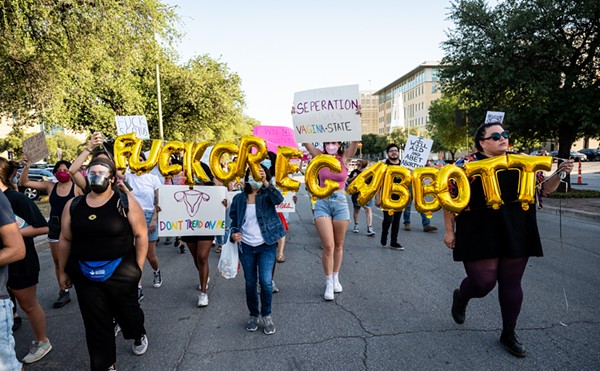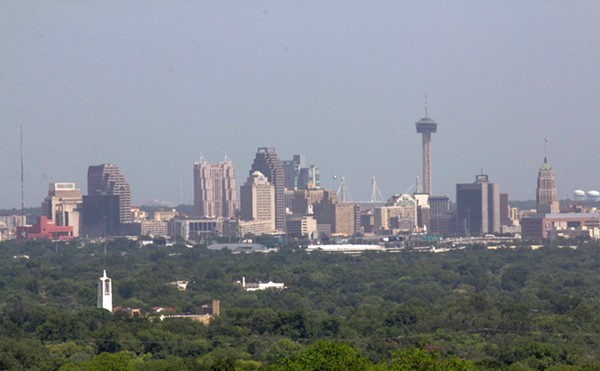“Welcome to the Brewery” reads the sign on Lamar Street, just below the Hays Street Bridge. This area, currently under development by the Alamo Brewing Company, has been the subject of real dispute—now hopefully resolved. But the battle, over the sale of City-owned land adjacent to the Hays Street Bridge, was based on a real disconnect between the vision of some City officials and developers and the interests of inner-city neighborhoods.
In 2006, local distributor BudCo donated a 1.7-acre parcel of land for park and open space adjacent to the bridge, which was in the process of being restored. By 2011, the location had attracted the attention of local brewer Eugene Simor, who proposed building a brewery adjacent to the bridge, using the donated property. He also wanted to place tables and chairs on the bridge itself. Simor’s plan was described by the Express-News as a way to “jump-start economic investment on the East Side,” and for at least some in the adjacent Dignowity Hill neighborhood, it held out the promise of turning the area into a “destination,” one filled with new restaurants, coffee shops and loft apartments.
The potential of a single craft brewery to turn a largely industrial zone of the East Side into an entertainment hub seems quite limited. Over and over, we’ve seen promising new restaurant and entertainment centers like the St. Mary’s Strip and Sunset Station bloom, only to wither away. The reality is that without a concentration of new development that can reach a substantial scale, isolated individual projects usually remain just that.
Beyond the actual merits of a new brewery or the possibility of turning a swath of the East Side into a “destination,” a host of San Antonio leaders have appeared for years to worship at the feet of “development.” Each newly announced private building project is described in grand terms as “development,” with the promise that it will attract even more new building and development, boost area land values and reshape the inner city. It is just that outlook that supported the sale of the City land to Simor, along with a grant of $800,000 in incentives. And that prospect of “development,” coupled with former Mayor Julián Castro’s rhetoric of a “Decade of Downtown,” has sustained millions in public incentives for new inner-city housing.
Now there’s yet another City commitment to “development,” with District 5 Councilmember Shirley Gonzales winning council approval for $1 million in planning funds for the “West Commerce Economic Corridor Project,” which she has christened the “Gateway to the Historic West Side.” Gonzales sees this as the opening wedge in an effort to improve the area under the West Commerce Street Bridge and create a “pedestrian-priority zone” linking UTSA’s downtown campus with the new VIA Westside Multimodal Transit Center at the old International and Great Northern Station. The Current’s Alexa Garcia-Ditta reported that Gonzales will be seeking $10 million of the $32 million previously allocated to the downtown streetcar for the new “Economic Corridor.”
There is an obvious political imperative that leads Gonzales to promote the development of West Commerce and the near West Side. Much the same political imperative has inspired a succession of District 2 representatives to promote development around St. Paul Square in addition to the promise of the new brewery. Literally every member of our 10-member council wants to be able to announce a promising new “development,” with the possibility of spurring even more “development” and growth. But for the inner city, those politics lead to some clearly dysfunctional decisions.
The council recently agreed to award CST Brands, Valero’s convenience-store spinoff, some $1.4 million in incentives, including an 80-percent, 10-year tax abatement for its new headquarters. And where will that subsidized new headquarters be? By Alamo Brewing’s new project, or on the near West Side? Nope. CST will be housed in an office and warehouse building on Bulverde Road, north of Loop 1604, far from inner-city residents who need jobs and where it will only contribute to the growing traffic congestion on Highway 281 and our pattern of sprawl.
Justifying the subsidy for a firm already here, locating in the outer reaches of the city, the Express-News quoted San Antonio Economic Development Director Rene Dominguez: “Business retention and expansion has been a priority for this city for the last four years.” Imagine if that priority actually focused on the parts of town that really need development and high-wage job growth. But that would require our city leaders to make real choices about where and how growth should happen, rather than just doing subsidy deals and promising “development.”

















